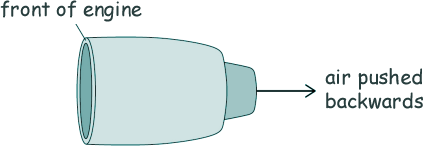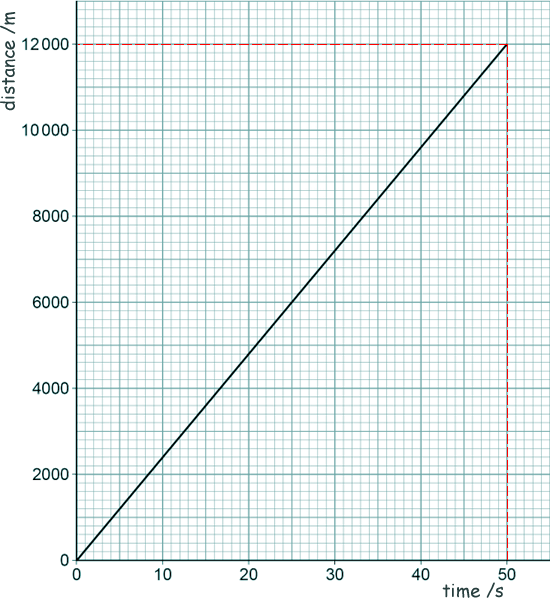GCSE Questions: Forces
Q22.

(a) An aircraft travels at a constant velocity.
(i) How is the velocity of the aircraft different to the speed of the aircraft?
Velocity is a vector quantity, so it has magnitude and direction whereas speed is a scalar quantity and only has magnitude.
Therefore the velocity of the aircraft will specify its speed in a particular direction. 
[1 mark]
(ii) The diagram shows one of the engines on the aircraft.

Air is taken into the front of the engine and pushed out of the back of the engine.
Explain the effect this has on the engine.
As it is travelling at constant velocity there is no net force acting.
Therefore an equal force from the air pushes on the engine/aircraft  in the opposite direction (forwards).
in the opposite direction (forwards). 
[2 marks]
(iii) Here is a distance-time graph for the aircraft.

Determine the speed of the aircraft.
The first mark was given for taking a correct value for distance and corresponding time from the graph (eg 12,000 m and 50 s) 
v = 12,000/50 
v = 240 m/s 
[3 marks]
(b)
(i) Write down the equation that links acceleration (a), change in velocity (Δv) and time taken (t).
acceleration = change in velocity/time taken
a = Δv/t 
[1 mark]
(ii) At a different stage of the flight, the aircraft was travelling at a velocity of 250 m/s.
The aircraft then decelerated at 0.14 m/s2 .
Calculate the time taken for the aircraft to decelerate from 250 m/s to 68 m/s.
t = Δv/a 
t = (250 - 68) /0.14
/0.14
t = 182/0.14 
t = 1300 s 
[4 marks]
(c)
(i) Write down the equation that links distance (s), force (F) and work done (W).
work done = force × distance
W = Fs 
[1 mark]
(ii) When the aircraft landed, it travelled 2.0 km before stopping. The work done to stop the aircraft was 140 MJ.
Calculate the mean force used to stop the aircraft.
W = Fs
F = W/s
F = (140 x 106  )/(2.0 x 103
)/(2.0 x 103  )
)
F = 70,000 N 
[4 marks]
[16 Marks TOTAL]


